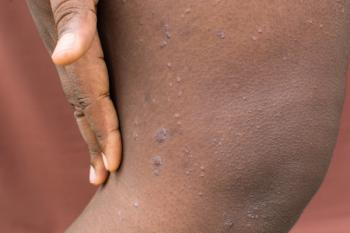
Research Highlights Unmet Needs for Patients With Hidradenitis Suppurativa
The findings are based on survey responses and focus group transcripts reflecting the experiences of nine patients.
A new study published in
Diagnosis and management of HS can vary between providers and result in care gaps like diagnostic delays, limited treatment access, and poor outcomes, researchers explained. In an effort to better understand these gaps through patients’ experiences, investigators recruited individuals with HS to participant in surveys and three semi-structured focus groups.
A total of 9 patients who visited dermatology practices affiliated with Northwestern University were included in the study. Virtual focus groups took place between March and April 2020. Researchers abstracted data from focus groups into themes, and a total of 20 pages of transcribed conversation were recorded.
Four themes focused on improved
Seven patients were female, and the largest contributing age group was between age 30 and 39. “Participants predominantly had Hurley stage II and III disease,” authors added.
When it comes to finding information about HS, most patients relied on their dermatologists, and felt online and social media resources did not compare to the knowledge of their health care provider. Despite this, some patients felt access to knowledgeable dermatologists was a source of frustration, and one patient reported it took three years for her to be diagnosed with HS.
Study participants also pointed to the need for improved treatment options and “felt medical therapies for refractory disease were scarce,” authors wrote. Others expressed concern about how medical treatments worked for a while, then eventually stopped.
Pain and odor were reported as the biggest challenges when it comes to controlling their disease. “Similar to severe pain, the odor associated with acute flares also caused significant social and physical activity limitation,” researchers said.
In addition, participants highlighted the significant adverse effects of treatments that limited usage and created hesitancy to try additional therapies. The condition also took a toll on participants’ mental health, with some reporting feelings of frustration and isolation.
With regard to disease management, patients said clothing, bandages, and toiletries could exacerbate their disease, while non-irritating cleansers were preferred for showering.
Survey data showed patients agreed most strongly with the following statements:
- HS causes me physical pain
- HS affects my skin because of its extension or severity of symptoms or concerned areas
- HS impairs my sentimental and sexual life
Overall, “the most frequently occurring theme was limited access to health care solutions, due to (1) financial barriers and (2) scarce knowledgeable providers,” the authors wrote.
Previous research estimated the economic burden of HS is around $6,630 higher than the average patient over three years, while those with HS are more likely to be unemployed or on disability.
The current study also presents a unique perspective on patients thanks to its virtual interface, authors noted. “Participants responded positively to the flexibility of videoconferencing and appreciated the opportunity to engage with optional anonymity (web camera disabled),” they said.
The small sample size and single-center nature of the study mark limitations, and results may not be generalizable. Selection and recall bias may have also been present in focus groups.
“This study has identified 6 unmet needs for patients with HS and highlighted the efficacy of a virtual format for research, conversation, and possibly clinical engagement,” researchers concluded. “While the dermatologic community is at the forefront of treating HS, the broad range of themes encompassed in this article underscores the need for further teamwork and innovation.”
Reference
Chadha SA, Stout MA, Goyal PK, Nguyen CV, and Lu KQ. Assessing unmet needs in patients with hidradenitis suppurativa. Arch Dermatol Res. Published online June 1, 2023. doi:10.1007/s00403-023-02645-y
Newsletter
Stay ahead of policy, cost, and value—subscribe to AJMC for expert insights at the intersection of clinical care and health economics.








